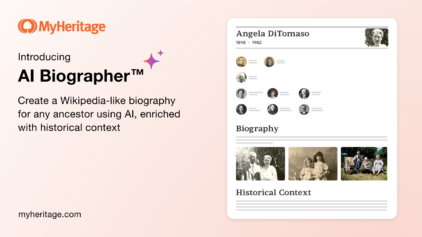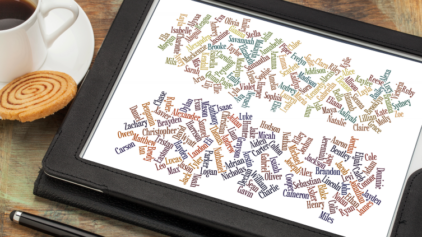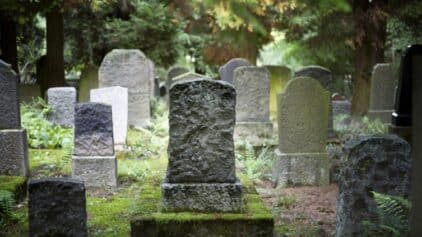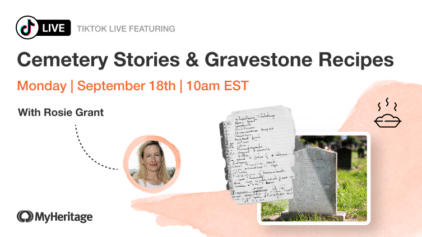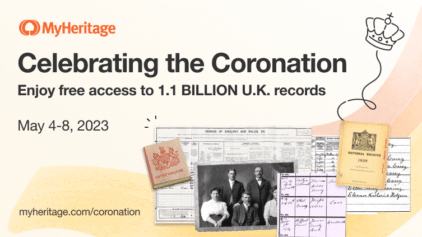

Happy Birthday to the Statue of Liberty, who doesn’t look a day over 125! And, in the same general location, Ellis Island has opened the Peopling of America Center.
A major map library has moved into state-of-the-art quarters and the largest collection of Hispanic American newspapers is now online.
In celebration of Halloween or Dia de los Muertos – take your pick – the Genealogy Canada blog will post an updated list of websites and blogs for Canadian obituaries tomorrow. If you are searching family north of the border, your elusive ancestors may be among records on those websites.
Lady Liberty’s Birthday
Genealogist Megan Smolenyak Smolenyak has written an article for the Huffington Post about Lady Liberty’s official unveiling on October 28, 1886, when about a million people watched in wet, foggy weather as President Cleveland received the remarkable gift from the people of France.
Megan included an original article from the New York Sun of that date (from the Library of Congress’s Chronicling America newspaper collection):
“We are not here today to bow before the representation of a fierce and warlike god, filled with wrath and vengeance, but we joyously contemplate instead our own deity keeping watch and ward before the open gates of America, and greater than all that have been celebrated in ancient song. Instead of grasping in her hand thunderbolts of terror and of death, she holds aloft the light which illumines the way to man’s enfranchisement.”
Our ancestors who came through New York harbor after that date always remarked on seeing Liberty. Once they saw her arm holding high the torch, they knew they were finally in America. Read Megan’s complete article here.
Peopling of America Center opens
The Statue of Liberty-Ellis Island Foundation has announced the first phase of the Peopling of America Center.
The 10,000-square-foot expansion to the Ellis Island Immigration Museum will first explore the pre-Ellis Island, and focus on immigration from the Colonial Era to the 1892 opening of Ellis Island. The exhibits include graphics and audio stories of immigrants themselves after their journeys.
An interactive video installation – the American Flag of Faces – was also opened. It is a montage of images provided by individuals of their families and their ancestors which illustrates the American mosaic. The exhibit accepts photos from the public. View it here.
In Spring 2013, the Center’s second phase will open with interactive multi-media exhibits on immigration from the closing of Ellis Island in 1954 through today.
Never enough maps!
The New England Historical and Genealogical Society’s blog at AmericanAncestors.org, reported on the opening of a major map center at the Boston Public Library.
The Norman B. Leventhal Map Center’s state-of-the-art new quarters is on the third floor of the Boston Public Library’s historic McKim Building in Boston. Created in 2004, the map center is the result of a public/private agreement between the library and a map collector. Today the public has access to some 200,000 maps and 5,000 atlases.
The current exhibit – through December 31 – is “Torn in Two: 150th Anniversary of the Civil War,” which showcases 50 historic maps, along with 40 photographs, paintings, prints, diaries, political cartoons, music and press from the Boston Public Library’s special collections.
Click on the website to view the extensive collections. Browse by location, subject, date, publisher, author and projection. Among the holdings are maps of colonial New England, Dutch cartography, 19th century county and town land ownership maps, fire insurance and real estate atlases and more. There are three virtual tours. Visitors can download maps and purchase copies of maps published before 1923.
Hispanic Newspapers Now Online
Tom Kemp writes the GenealogyBank.com blog and reported on the site’s collection of Hispanic American newspapers.
The site claims the largest collection of these newspapers – more than 360 newspapers. Periodicals are an essential go-to source for genealogists and family historians.
Included in the collection is the oldest surviving Hispanic newspaper – El Misisipi. It was first published in New Orleans, in 1808.
Researchers find newspapers to be goldmines where they can find birth, marriage and obituary notices, news of the day and – one of my favorite aspects of newspaper research – the advertisements. Data covers cultural, social, religious and personal news that can aid those looking for information on their family trees. Click on the first link in this section to read more about the collection in Tom’s blog post.
Have you used these resources? What have you found? Tell us about them in the comments below. Your experiences may help other researchers. We look forward to reading your comments.


